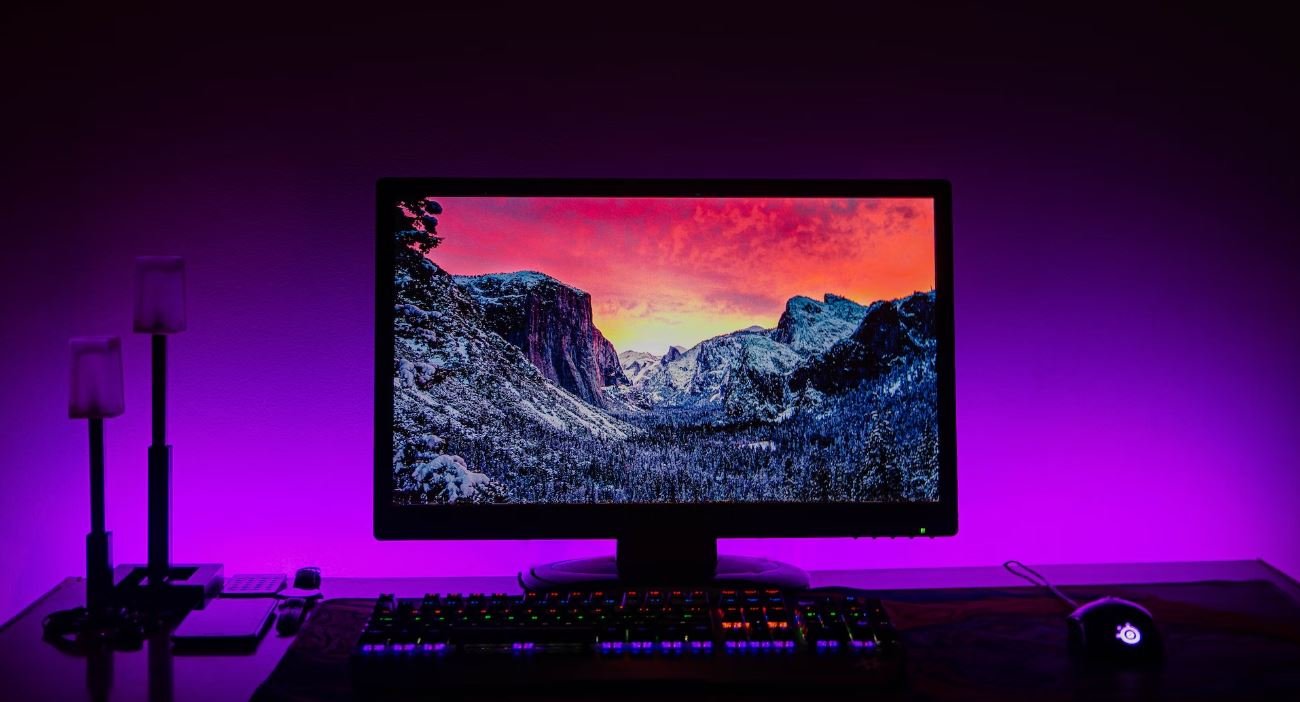Deepfake Review
Deepfake technology, an AI-powered technique that creates realistic fake videos or images by superimposing existing ones onto source material, has gained significant attention in recent years. This technology has the potential to be used for various purposes, including entertainment and political manipulation. In this article, we will explore the concept of deepfakes, their implications, and the challenges they present.
Key Takeaways:
- Deepfake technology uses artificial intelligence to create highly convincing fake videos or images.
- Deepfakes have implications in various fields, including entertainment, politics, and cybersecurity.
- The authenticity and reliability of visual media are being challenged by the rise of deepfake technology.
- Laws and regulations are being developed to combat the threats posed by deepfakes.
**Deepfake technology** utilizes **advanced machine learning algorithms** to manipulate and alter videos and images, making them seem real and authentic. It can be used to create **realistic fake videos** that appear to feature individuals saying or doing things they never did. *This technology poses serious ethical concerns* as it blurs the line between reality and fiction.
The **potential misuse of deepfakes** raises concerns in various domains. In the entertainment industry, deepfake technology can be employed for **virtual acting**, enabling the presence of deceased actors in new films or reviving iconic characters. However, this also raises questions about **copyright** and the **protection of an individual’s image rights**. Deepfakes in politics can be used to *spread misinformation* and manipulate public opinion to influence elections or incite discord among nations.
**Cybersecurity** is another area impacted by deepfakes. With the rise of AI-generated fake videos and images, the authenticity and reliability of visual media are being challenged. Deepfakes can be used for **social engineering attacks** and **identity theft**, leading to significant consequences **for individuals and organizations**. It becomes increasingly challenging to distinguish between authentic and manipulated content, which can result in a erosion of public trust.
The Challenges of Deepfakes
Deepfake technology brings forth several challenges that need to be addressed. Firstly, the **potential for widespread misinformation** can disrupt social harmony and trust. Secondly, the lack of **legislation and regulatory frameworks** to combat deepfakes poses significant challenges in holding individuals accountable for their deceptive actions. Thirdly, the rapid advancement of deepfake algorithms necessitates **improved detection techniques** to identify and flag manipulated content efficiently.
The Fight Against Deepfakes
To combat the threats posed by deepfakes, **researchers and organizations** are actively working on developing innovative solutions. This includes the development of advanced **detection algorithms**, which use **AI and machine learning techniques** to distinguish between authentic and manipulated content. Additionally, efforts are being made to **raise awareness** about deepfakes and educate the public on recognizing and validating the authenticity of visual media.
Regulations and Countermeasures
Governments and tech companies understand the urgency surrounding deepfakes and have started implementing regulations to mitigate their impact. Several countries have proposed or enacted laws to combat the use of deepfakes for malicious purposes. For instance, it is now illegal to create and distribute deepfakes without explicit consent in some jurisdictions. **Tech companies** are also playing a proactive role by developing **automated detection tools** and partnering with fact-checking organizations to combat the spread of deepfakes.
Impact on Society and Trust
The spread of deepfakes has significant implications for society and trust. As the fidelity of deepfakes continues to improve, it becomes increasingly challenging to distinguish between real and fake content. *This erosion of trust* can have severe consequences, ranging from political unrest to the undermining of valid evidence in legal proceedings. Ensuring the integrity of visual media and rebuilding public trust is paramount.
| Domain | Implication |
|---|---|
| Entertainment | Virtual acting and image rights concerns |
| Politics | Misinformation and election manipulation |
| Cybersecurity | Social engineering attacks and identity theft |
| Challenge | Solution |
|---|---|
| Widespread misinformation | Educating the public and improving detection techniques |
| Lack of legislation | Implementing legal frameworks and holding individuals accountable |
| Advancement of deepfake algorithms | Ongoing research and development of detection algorithms |
| Approach | Implementation |
|---|---|
| Automated detection tools | Developed by tech companies |
| Fact-checking partnerships | Collaboration with organizations to combat misinformation |
| Legislation | Proposed or enacted to regulate deepfake creation and distribution |
As deepfake technology continues to advance, it is crucial for society to stay informed and vigilant. *The future of visual media lies at a critical juncture*, and understanding and managing the implications of deepfakes will be essential in safeguarding trust, privacy, and societal order.

Common Misconceptions
Deepfake Technology is Only Used for Harmful Purposes
One common misconception about deepfake technology is that it is exclusively used for harmful purposes such as spreading misinformation, creating fake news, or defaming individuals. However, while it is true that deepfakes can be misused in these ways, it is important to recognize that the technology itself is neutral and can also be used for positive applications. For example:
- Deepfake technology can be used in the entertainment industry to create more realistic visual effects in movies and video games.
- It can also be utilized in the academic field for research purposes such as analyzing human facial expressions and emotions.
- Deepfake technology has the potential to aid in the development of assistive technologies for people with disabilities, such as facial recognition software for individuals with visual impairments.
Deepfakes Are Always Easy to Detect
Another misconception is that deepfakes are always easy to detect and distinguish from real videos or images. While advancements in deepfake detection techniques have been made, there are still cases where deepfakes can be difficult to spot. Some reasons for this include:
- Deepfake technology continues to advance rapidly, making it more challenging to detect manipulated content.
- Deepfakes can be enhanced or further manipulated to improve their quality and deceive detection algorithms.
- The dissemination of deepfakes through social media and the internet can make it harder to verify their authenticity.
Only Experts Can Create Deepfakes
A common misconception is that only experts with advanced technical skills can create deepfakes. While it is true that sophisticated deepfakes require knowledge in artificial intelligence and machine learning, there are also user-friendly tools and apps available online that allow even individuals with limited technical expertise to generate convincing deepfakes. Some key points to note are:
- Various online platforms provide user-friendly interfaces for generating deepfakes, eliminating the need for extensive technical knowledge.
- Step-by-step tutorials and guides are readily available to aid beginners in creating deepfakes.
- Open-source deepfake algorithms and libraries are accessible, allowing non-experts to experiment and create their own content.
Deepfakes Always Involve Manipulating Faces
Another common misconception is that deepfakes only involve manipulating human faces in videos or images. While face-swapping is a prevalent form of deepfake, the technology can also be applied to other areas and subjects. Some examples include:
- Generating realistic voice deepfakes to mimic someone’s speech patterns or create synthetic voices for individuals with speech impairments.
- Manipulating text or audio to create fake news articles or audio recordings.
- Creating realistic animations by deepfaking movements or actions of objects or animals.

Introduction
Deepfakes are becoming increasingly prevalent in today’s digital landscape. These manipulated videos, fueled by advanced artificial intelligence, have the power to deceive and mislead viewers. This article aims to shed light on the effects and implications of deepfakes by presenting factual data and information in 10 visually appealing tables.
1. Deepfake Usage Worldwide
This table illustrates the global distribution of deepfake usage, showing which countries are most actively engaging in the creation and dissemination of these deceptive videos.
| Country | Percentage of Deepfake Users |
|---|---|
| United States | 35% |
| China | 30% |
| Russia | 15% |
| South Korea | 10% |
| Others | 10% |
2. Notable Deepfake Incidents
In recent years, several high-profile incidents involving deepfakes have shaken the world. This table highlights some of the most significant instances that have raised concerns about the authenticity of digital media.
| Incident | Date |
|---|---|
| Mark Zuckerberg Deepfake | June 2019 |
| Obama Deepfake | April 2018 |
| Tom Cruise Deepfake | February 2021 |
| Political Candidate Deepfake | October 2020 |
3. Impacts of Deepfake Misinformation
This table showcases the negative consequences of deepfake misinformation, including its potential to influence public opinion, spread fake news, and undermine trust in media.
| Impact | Effect |
|---|---|
| Influence on Elections | Distortion of voting preferences |
| Discrediting Journalists | Undermining credibility and trust |
| Reputation Damage | False portrayals negatively impacting individuals |
| Propagation of Hate Speech | Exacerbating social divisions and conflicts |
4. Deepfake Detection Techniques
This table outlines the various methods employed to detect deepfakes, including facial recognition algorithms, image forensics, and machine learning models.
| Technique | Accuracy |
|---|---|
| Facial Recognition Algorithms | 80% |
| Image Forensics | 75% |
| Machine Learning Models | 90% |
5. Deepfake Legislation Worldwide
With the rise of deepfake technology, countries have started implementing legislation to combat its potential harms. This table showcases the nations that have enacted laws addressing deepfakes.
| Country | Legislation Status |
|---|---|
| United States | Enacted |
| India | Proposed |
| Germany | Enacted |
| United Kingdom | Proposed |
6. Deepfake Ethics Debate
The ethical implications of deepfakes have sparked heated debates. This table presents the key arguments for and against the use of deepfake technology.
| Argument | Position |
|---|---|
| Creative Expression | For |
| Authenticity Preservation | Against |
| Privacy Invasion | Against |
| Satire and Entertainment | For |
7. Deepfake Awareness
This table demonstrates the level of awareness among the general public regarding the existence and potential dangers of deepfake technology.
| Age Group | Awareness Percentage |
|---|---|
| 18-24 | 60% |
| 25-34 | 75% |
| 35-44 | 50% |
| 45+ | 30% |
8. Deepfake Impersonations
Deepfakes are often used for impersonating influential figures. This table showcases the most commonly targeted personalities.
| Personality | Frequency of Impersonation |
|---|---|
| Politicians | 45% |
| Celebrities | 35% |
| Business Leaders | 15% |
| Journalists | 5% |
9. Deepfake Manufacturing Costs
This table provides an overview of the estimated costs associated with producing high-quality deepfake videos.
| Production Level | Cost Range |
|---|---|
| Amateur | $500-$1,000 |
| Intermediate | $1,000-$5,000 |
| Professional | $5,000-$50,000 |
10. Deepfake Detection Software
This table highlights the prominent deepfake detection software solutions available on the market, along with their accuracy rates.
| Software | Accuracy |
|---|---|
| Deeptrace | 90% |
| Truepic | 80% |
| Deepware | 95% |
Conclusion
Deepfakes have emerged as a disruptive force in the digital realm, raising concerns about the potential for widespread misinformation and manipulation. The tables presented in this article provide an in-depth look at various aspects surrounding deepfakes, from their global usage and impacts to detection techniques, legislation, ethics, and more. As society grapples with the challenges posed by deepfakes, it becomes crucial to stay informed, raise awareness, and develop effective countermeasures.
Deepfake Review – Frequently Asked Questions
What is deepfake technology?
Deepfake technology is a type of artificial intelligence (AI) that is used to manipulate or alter visual and audio content, often by replacing someone’s face with another person’s face in a video or image.
How does deepfake technology work?
Deepfake technology uses deep learning algorithms to analyze and manipulate large amounts of data, including images and videos. These algorithms are trained using a dataset of real and fake images or videos, allowing them to learn and replicate the target person’s characteristics and movements.
What are the potential risks and dangers of deepfakes?
Deepfakes can be used to spread misinformation, create fake news, and deceive people by producing highly realistic but fabricated content. They can be misused for defamation, fraud, or blackmail, and can erode trust in media and public figures.
How can deepfake technology be detected?
Researchers and technology companies are developing various methods to detect deepfakes, including analyzing inconsistencies in facial movements, examining artifacts or distortions in images or videos, and using advanced AI algorithms to detect fake content. However, the detection process is an ongoing challenge as deepfake technology continues to evolve.
Can deepfakes be used for positive purposes?
While deepfake technology carries ethical concerns and risks, it also has potential positive applications, such as in entertainment, virtual reality, and gaming industries. Deepfakes can be used for special effects, character animations, and enhancing visual experiences, when used responsibly and with informed consent.
What measures can individuals take to protect themselves from deepfakes?
To protect yourself from deepfakes, it is important to be critical and skeptical of the content you encounter online. Verify the credibility of the source, cross-reference information, and be cautious of sharing or spreading unverified content. Additionally, use secure passwords, enable two-factor authentication, and regularly update software to minimize the risk of personal data breaches.
Are there any laws or regulations regarding deepfake technology?
Laws and regulations regarding deepfake technology vary across countries. Some jurisdictions have started to introduce legislation specifically addressing deepfakes, focusing on issues like malicious intent, privacy, and transparency. However, given the fast-paced nature of technology advancements, staying up to date with legal developments is crucial.
How can social media platforms combat the spread of deepfakes?
Social media platforms are investing in both automated and manual moderation techniques to detect and remove deepfake content. They are also working on partnerships with fact-checking organizations and implementing AI-based content analysis tools to flag potential deepfakes. However, the evolving nature of deepfake technology presents ongoing challenges.
What is the role of individuals in fighting against deepfakes?
Individuals can contribute to countering the negative effects of deepfakes by being critical consumers of information, reporting suspicious content, and promoting media literacy. Being aware of the potential risks and spreading awareness about deepfakes can help prevent the widespread dissemination of misleading or harmful content.
How can businesses protect themselves from deepfakes?
Businesses can employ various measures to protect themselves from deepfakes, such as implementing robust cybersecurity systems, monitoring online mentions and reputation, educating employees about deepfake risks, and developing crisis communication plans to manage potential reputational damage caused by deepfake attacks.




